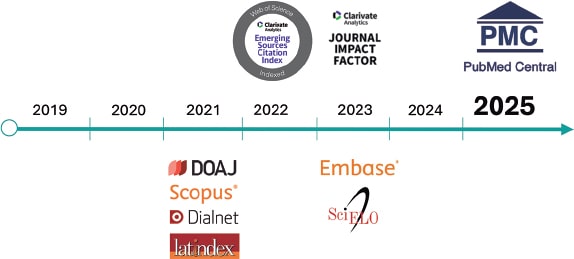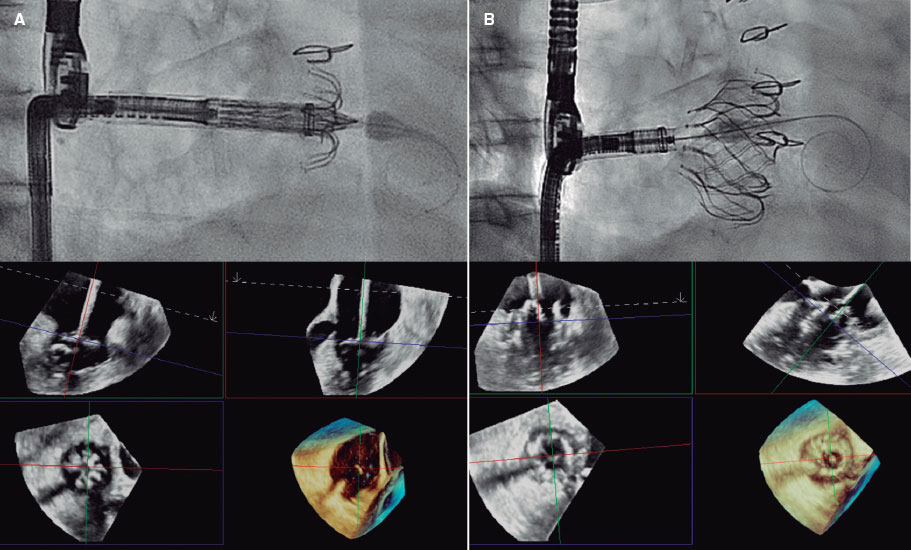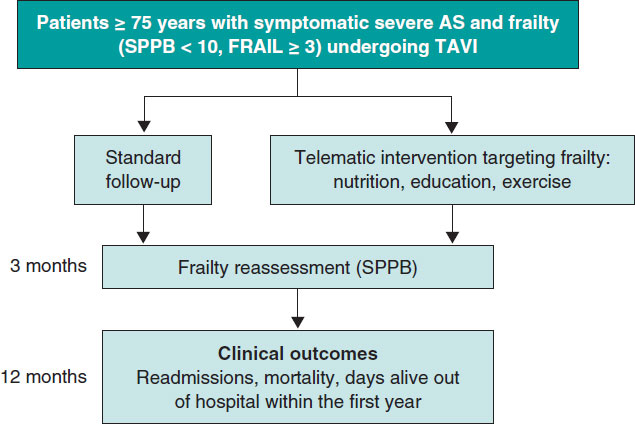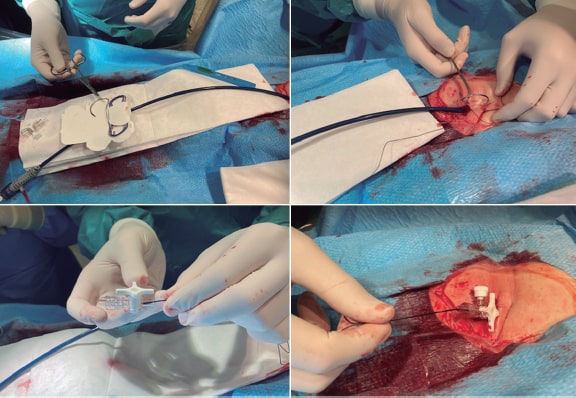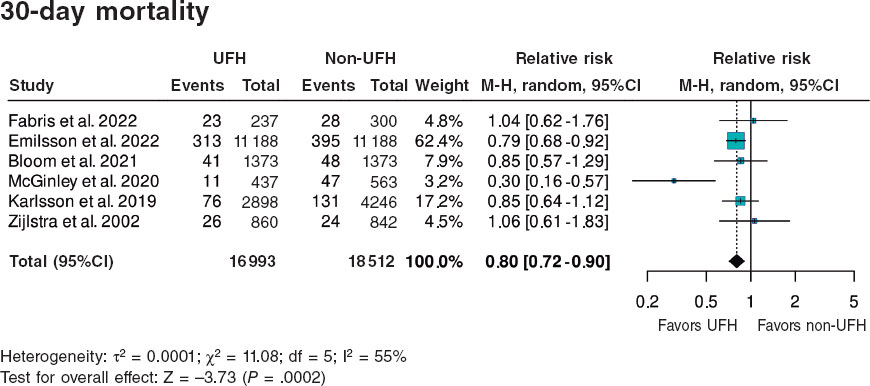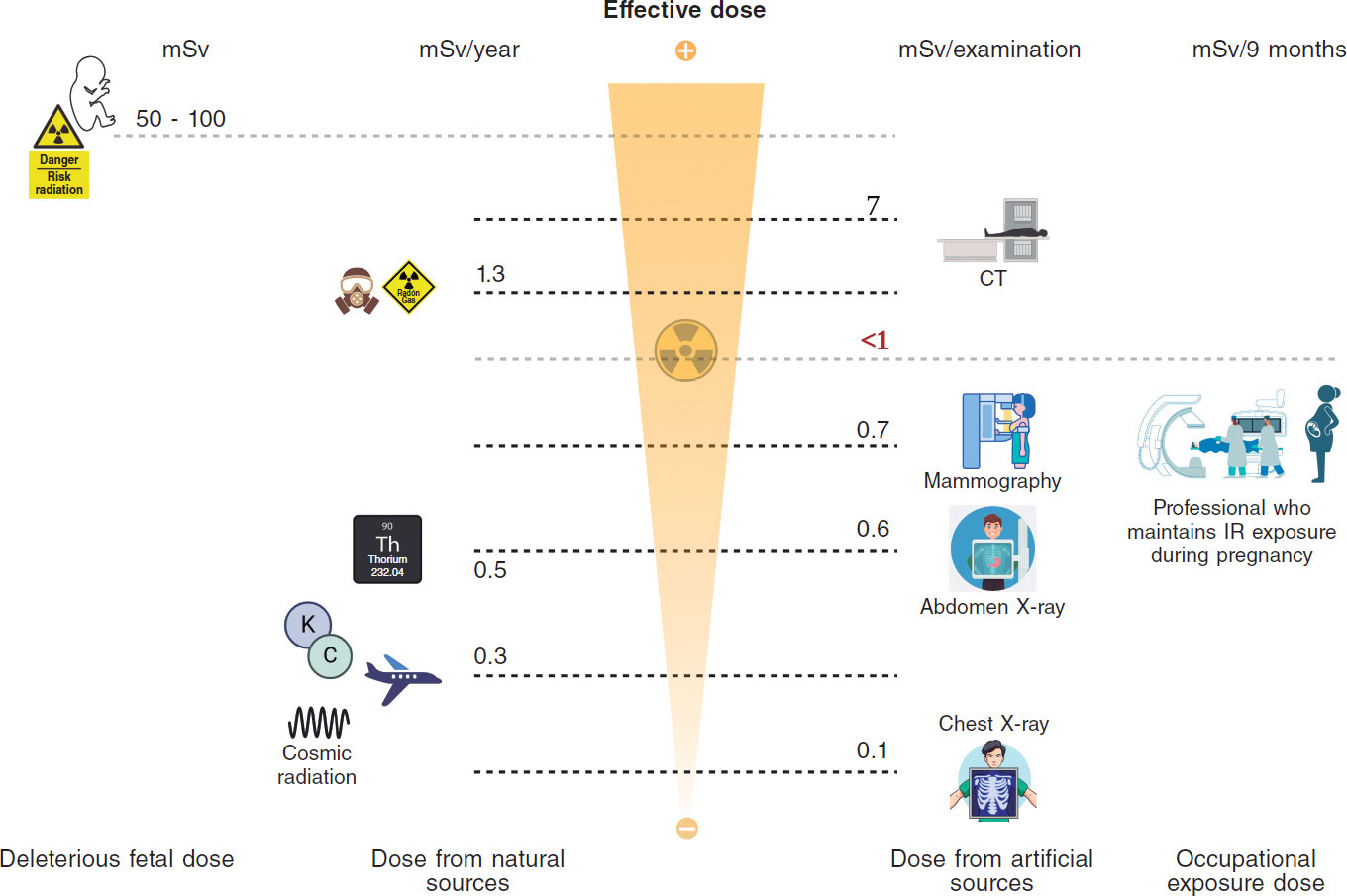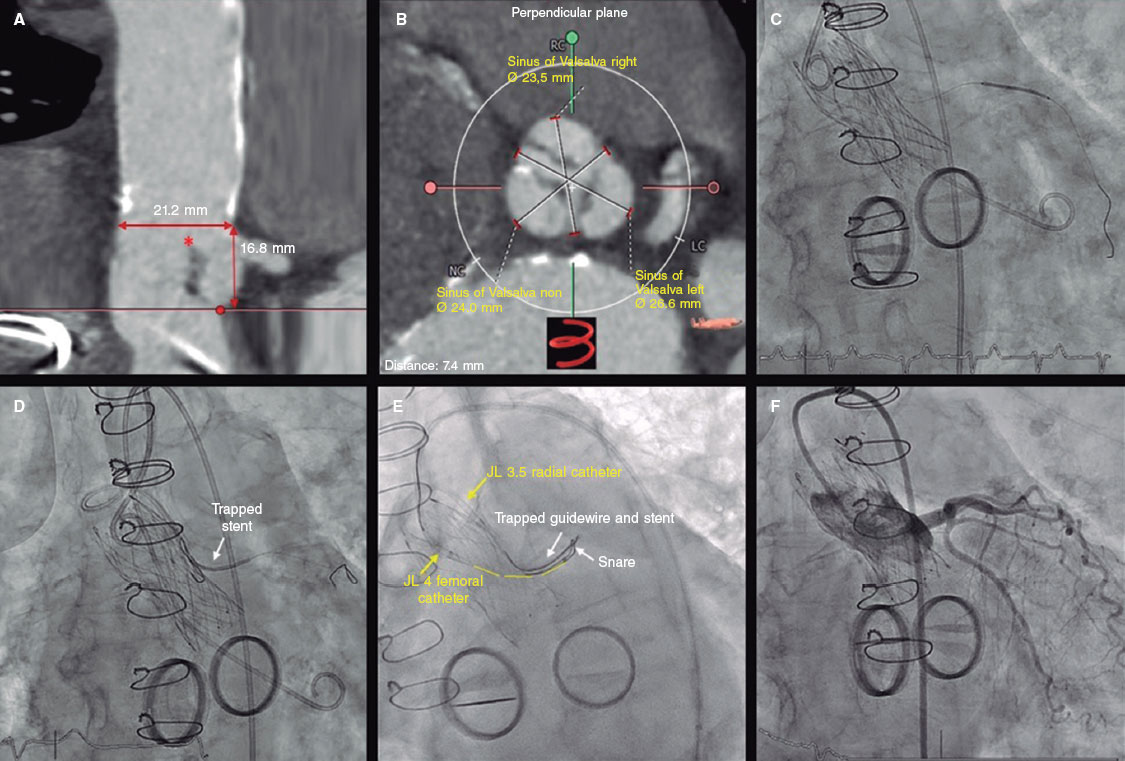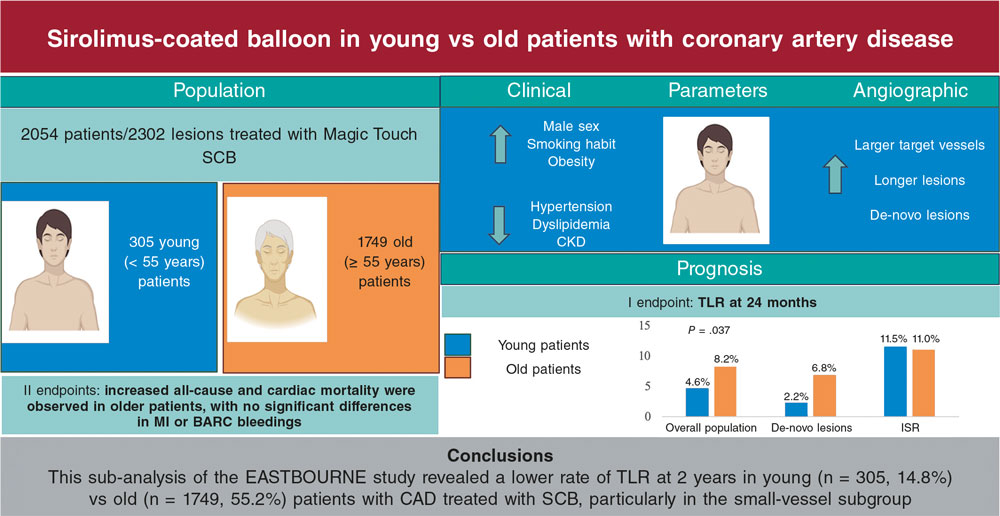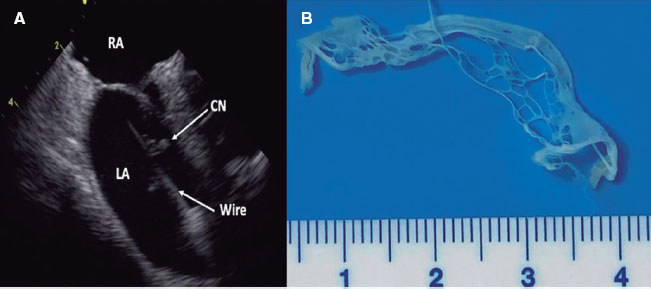Article
Debate
REC Interv Cardiol. 2019;1:51-53

Debate: MitraClip. The heart failure expert perspective
A debate: MitraClip. Perspectiva del experto en insuficiencia cardiaca
aServicio de Cardiología, Hospital Clínico Universitario de Valencia, INCLIVA, Universidad de Valencia, Valencia, Spain bCIBER de Enfermedades Cardiovasculares (CIBERCV), Spain
Related content
Debate: MitraClip. The interventional cardiologist perspective

QUESTION: Clinical practice guidelines have raised the recommendation level for the use of intravascular imaging during percutaneous revascularization procedures for complex lesions to class I. Can you briefly explain the basis for this change?
ANSWER: The change of recommendation made in the European Society of Cardiology (ESC) guidelines to class I and evidence level A for the management of chronic coronary syndrome1 is based on 5 main references: 3 randomized clinical trials published in 2023 in the N Engl J Med,2-4 which included a total of 5327 patients, and 2 meta-analyses published in the J Am Coll Cardiol (2023)5 and Lancet (2024),6 with a total of 38,648 patients. These trials showed a reduction in major cardiovascular adverse events and target vessel failure compared with the angiography-guided procedure alone.
Although only 1 of the randomized clinical trials2 did not show statistically significant benefits in the clinical endpoint of target vessel failure, it did show improvements in stent minimal area assessment by imaging, which were significantly greater in patients treated with optical coherence tomography (OCT). The studies mentioned in the guidelines were conducted in populations with complex lesions, including bifurcations,3,4 chronic total occlusions,2,4 diffuse disease (≥ 38 mm2 or ≥ 28 mm2), severe calcification,2,4 multivessel disease,4 diffuse restenosis,2 ostial lesions,4 and left main coronary artery disease.3,4 The rates of diabetic patients varied across studies (18%,3 28%,4 and 40%2), and high rates of acute coronary syndrome were reported (50%4 and 59.5%2).
The most recent meta-analysis5 with 15,964 patients allocated to intravascular ultrasound (IVUS) or OCT vs coronary angiography-guided angioplasty showed a 45% reduction in cardiac death, a 18% reduction in target vessel myocardial infarction, a 28% reduction in lesion revascularization, a 61% reduction in stent thrombosis, a 25% reduction in all-cause mortality, and a 17% reduction in global infarction, with no significant differences being reported between IVUS and OCT.
Q.: According to data from the activity registry of the Interventional Cardiology Association of the Spanish Society of Cardiology (ACI-SEC), intravascular imaging is used in 15% of patients treated with percutaneous revascularization. Do you think this new recommendation will increase that figure? What are the barriers to greater implementation of these techniques?
A.: In the 2023 ACI-SEC registry,7 intracoronary imaging and pressure wire-guided percutaneous coronary interventions (PCI) remain stable at around 15% of cases, with 7% corresponding to IVUS and 3% to OCT; similar figures to those from 2022, with a slight increase in OCT use. The new European guidelines recommendation should encourage its use. However, there may be initial barriers to its implementation, including:
- – Cost: cost-effectiveness analyses have shown that despite higher initial procedural costs, both IVUS and OCT are favorable in the mid- and long-term due to the reduction in adverse events and reinterventions.8-10
- – Procedural time: the incorporation of intracoronary imaging may extend PCI procedural time. Although this time has been significantly reduced compared with the early days of the technique,11,12 it can vary depending on factors such as coronary anatomy, intervention complexity, the experience of the heart team, and the existence of systematic analysis protocols. New automatic or semi-automatic analysis programs and co-registration can reduce analysis times and, substantially, aid decision-making.
- – Team training: training in the use of devices and intracoronary imaging analysis should be incorporated into both basic interventional cardiology training and continuing education programs. This will be essential to minimize the immediate minimal incremental risks associated with its use2 and make it a systematic tool. Its integration has the potential to significantly reduce adverse events such as cardiac death and target vessel failure.5
Q.: Although, in general, the new recommendation is indicated for complex lesions, it particularly highlights left main coronary artery disease, true bifurcations, and long lesions. Could you elaborate which lesions, in your opinion, would benefit most from the use of intravascular imaging in treatment?
A.: The new clinical practice guidelines on the management of chronic coronary syndrome support the use of intracoronary imaging based on the above-mentioned studies,2-6 in which, at least, 5327 patients exhibited complex lesions. This represents about a third of all 15,964 patients included in the most recent meta-analysis;6 however, it also included other studies with patients with complex lesions, such as long lesions, left main coronary artery disease, ST-segment elevation and non-ST-segment elevation myocardial infarctions, and chronic total occlusions, as well as patients with less complex lesions. With current evidence, there are scenarios—rather than individual lesions—where the use of intracoronary imaging should be considered essential, such as left main coronary artery disease, coronary artery occlusions, complex bifurcations, severely calcified coronary lesions, PCI-related complications, spontaneous coronary dissection requiring intervention, long lesions, lesions with a high thrombotic burden, target lesion failure, diabetic patients, and those with multivessel disease.
Q.: The complexity of interventions is not only determined by anatomical complexity, as we know that there are clinical situations that impose challenges as well. In your opinion, what clinical scenarios or factors should encourage the use of intravascular imaging to optimize procedures?
A.: The use of intracoronary imaging is supported in virtually all clinical scenarios. Although the ESC guidelines on the management of chronic coronary syndrome1 have formalized its recommendation, the meta-analyses supporting this indication include both chronic and acute clinical contexts and address most coronary artery lesions, from simple to highly complex. Moreover, integrating coronary physiology with intracoronary imaging could be a key element to optimize outcomes in percutaneous coronary treatment offering a more precise approach to the intervention.13
Q.: In general, when do you use intravascular imaging?
A.: In my routine clinical practice, I use intracoronary imaging primarily in complex PCI cases, such as left main coronary artery disease, diffuse disease, chronic total occlusions, bifurcations not treated with provisional stent techniques, or severely calcified coronary lesions, as well as in cases of treatment failure of previously treated segments and PCI-related complications. I foresee incorporating intracoronary imaging systematically in diabetic patients and in the planning of treatments with drug-eluting balloons to optimize results and further individualize the intervention strategy.
Q.: When you use imaging, when do you prefer IVUS and when OCT?
A.: In my everyday practice, I rather use IVUS for the evaluation of left coronary artery disease, in unstable patients, in those with renal insufficiency, in cases of high thrombotic burden, dissection, and for managing PCI-related complications. Conversely, I use the OCT in situations of target lesion failure, both in stents and in segments previously treated with drug-eluting balloons, in severely calcified coronary lesions, and in cases of diffuse disease, particularly in diabetic patients, in whom co-registration helps to more precisely delineate the segments that need to be treated.
FUNDING
None declared.
STATEMENT ON THE USE OF ARTIFICIAL INTELLIGENCE
No artificial intelligence was used in the development of the concept of this manuscript.
CONFLICTS OF INTEREST
None declared.
REFERENCES
1. Vrints C, Andreotti F, Koskinas K, et al. 2024 ESC Guidelines for the management of chronic coronary syndromes of the European Society of Cardiology (ESC). Eur Heart J. 2024;45:3415-3537.
2. Ali ZA, Landmesser U, Maehara A, et al. Optical coherence tomography-guided versus angiography-guided PCI. N Engl J Med. 2023;389:1466-1476.
3. Holm NR, Andreasen LN, Neghabat O, et al. OCT or angiography guidance for PCI in complex bifurcation lesions. N Engl J Med. 2023;389:1477-1487.
4. Lee JM, Choi KH, Song YB, et al. Intravascular imaging-guided or angiography-guided complex PCI. N Engl J Med. 2023;388:1668-1679.
5. Kuno T, Kiyohara Y, Maehara A, et al. Comparison of intravascular imaging, functional, or angiographically guided coronary intervention. J Am Coll Cardiol. 2023;82:2167-2176.
6. Stone GW, Christiansen EH, Ali ZA, et al. Intravascular imaging-guided coronary drug-eluting stent implantation:an updated network meta-analysis. Lancet. 2024;403:824-837.
7. Bastante T, Arzamendi D, Martín-Moreiras J, et al. Spanish cardiac catheterization and coronary intervention registry. 33rd official report of the Interventional Cardiology Association of the Spanish Society of Cardiology (1990-2023). Rev Esp Cardiol. 2024;77:936-946.
8. Sharp A, Kinnaird T, Curzen N, et al. Cost-effectiveness of intravascular ultrasound-guided percutaneous intervention in patients with acute coronary syndromes:A UK perspective. Eur Heart J Qual Care Clin Outcomes. 2024;10:677-688.
9. Hong D, Lee J, Lee H, et al. Cost-Effectiveness of Intravascular Imaging-Guided Complex PCI:Prespecified Analysis of RENOVATE-COMPLEX-PCI Trial. Circ Cardiovasc Qual Outcomes. 2024;17:010230.
10. Zhou J, Liew D, Duffy S, et al. Intravascular Ultrasound Versus Angiography-Guided Drug-Eluting Stent Implantation:A Health Economic Analysis. Circ Cardiovasc Qual Outcomes. 2021;14:006789.
11. Mudra H, Di Mario C, Jaegere H, et al. Randomized comparison of coronary stent implantation under ultrasound or angiographic guidance to reduce stent restenosis (OPTICUS Study). Circulation. 2001;12:1343-1349.
12. Serra Peñaranda A. Ultrasonidos intracoronarios:¿una técnica necesaria en la implantación de stents?Argumentos en contra. Rev Esp Cardiol. 1999;52:390-397.
13. Fezzi S, Ding D, Mahfoud F, et al. Illusion of revascularization:does anyone achieve optimal revascularization during percutaneous coronary intervention?Nat Rev Cardiol. 2024;21:652-662.

QUESTION: We would like to know your interpretation of the PREVENT trial.1 Do you think it could change clinical practice regarding the treatment of vulnerable plaques?
ANSWER: The PREVENT is the first clinical trial ever conducted with statistical power to detect clinical differences in preventive treatment with stent implantation in functionally non-significant vulnerable plaques (fractional flow reserve [FFR] > 0.80, obtained via intracoronary pressure wire).1 This trial included patients with vulnerable plaques diagnosed using various intracoronary imaging modalities, who were randomized to receive stent implantation or optimal medical therapy. Approximately 2000 out of the 5500 lesions evaluated in the study were functionally significant (FFR ≤ 0.80), while 1600 (45%) out the remaining functionally non-significant 3500 lesions had vulnerable plaque criteria and were included in the study. The primary endpoint at the 2-year follow-up—a composite of cardiac death, target vessel myocardial infarction, target vessel revascularization, or hospitalization for unstable angina—was observed in 0.4% of the intervention group and 3.4% of the control group (a statistically significant difference). Despite this favorable result, the PREVENT trial has important limitations that raise questions on the implementation of this practice in everyday life.
First, more than 80% of the patients from the PREVENT trial were included with a chronic coronary syndrome (CCS). If we admit that the reason behind preventive treatment with stent implantation in vulnerable plaques is to prevent the rupture of the plaque and, therefore, reduce the risk of an acute coronary syndrome (ACS), then a population with low risk of ischemic events has been included at the follow-up. The CLARIFY registry2 helps us to put into context the residual risk of a properly treated coronary patient. In this registry with 32,000 patients, the risk of non-fatal myocardial infarction or cardiac death for those with CCS who had never experienced an ACS was 6.4% (9.1% at the 5-year follow-up for those with a history of myocardial infarction, which is a statistically significant difference).
Second, in the PREVENT trial, a total of 3 different intracoronary imaging modalities were used for the diagnosis of vulnerable plaques, any of them at the discretion of the operator performing the test based on their experience: intravascular ultrasound (IVUS), near-infrared spectroscopy (NIRS), or optical coherence tomography (OCT). Furthermore, different criteria for vulnerable plaques were marked depending on the imaging modality used, which very likely included multiple anatomical types of plaques. In general, almost 60% of all vulnerable plaques included were defined with IVUS by a minimum luminal area < 4 mm2 and a plaque burden > 70%, with no mention of plaque composition. We know that most lesions causing ACS are fibro-lipid plaques with rupture of the (thin) fibrous cap covering their necrotic core.3 Fibrous plaques, thick-capped fibro-lipid plaques, or fibrocalcific plaques do not usually trigger ACS and are more associated with CCS. Probably, in the PREVENT trial, preventive stent implantation was overused for many plaques that did not meet these vulnerable plaque requirements after the use of an inappropriate intravascular imaging modality and choosing vulnerable plaque criteria that do not correspond to the types of plaques that can cause ACS.
Finally, in the PREVENT trial, all clinical benefit observed in favor of the mechanical treatment of vulnerable plaques derived from a reduction in the number of revascularizations and hospitalizations for unstable angina, without any significant differences being reported in the risk of non-fatal myocardial infarction or cardiac death, even at the 7-year follow-up. In the FAME 1 trial,4 which included patients with CCS and multivessel coronary artery disease, we learned that FFR-guided coronary revascularization reduces the number of lesions to be treated by around 40%, and that the optimal medical therapy—without stent—of these functionally non-significant lesions has similar efficacy to the revascularization of all angiography-guided only lesions in addition to being safe and cost-effective at the 5-year follow-up. Going back to the PREVENT trial, the preventive and elective revascularization of 45% of functionally non-significant lesions (FFR > 0.80) with criteria of vulnerable plaque to prevent only 3% of clinically driven target lesion revascularizations at the 7-year follow-up does not seem to offer a great clinical benefit and raises questions about cost-effectiveness. To change clinical practice, results with reductions in non-fatal myocardial infarction and cardiac death at the follow-up are needed.
Q.: Very briefly, what is the current state of evidence on the mechanical treatment of coronary plaques that do not compromise flow but show characteristics of vulnerability?
A.: Scientific evidence on preventive stent implantation in functionally non-significant coronary plaques with characteristics of vulnerable plaque is scarce. Post-hoc studies with patients assessed with OCT before stent implantation and at the follow-up show that stent implantation on thin fibrous cap fibroatheroma plaques—also known as vulnerable plaques—induces scarring of the neointima surrounding the struts, thickening of the fibrous cap, and potentially reduces the risk of plaque rupture.5
To date, only 2 prospective, randomized trials have investigated the utility of stenting on vulnerable plaques: the PROSPECT-ABSORB6 and PREVENT1 clinical trials. These 2 trials found significant differences in favor of mechanical intervention. However, as already mentioned, these trials have important limitations regarding the number of patients included (< 2000 combined), the intracoronary imaging modality used to define vulnerable plaque (mainly IVUS), and the endpoints that are not adequate to assess efficacy (clinical benefit obtained by reducing the need for revascularization, not the rate of non-fatal myocardial infarction or cardiac death).
A pilot study on the use of drug-coated balloons for treating vulnerable plaques—the DEBuT-LRP7 trial7—is also worth mentioning. This trial included a total of 18 patients who were assessed with NIRS during the index procedure and at the 9-month follow-up, and whose results showed that the amount of lipid decreased without affecting lumen size. However, much more evidence will be needed before recommending this treatment for vulnerable plaques.
Q.: In your opinion, in current clinical practice, which patients would be eligible for this strategy, if any?
A.: There is no clear answer to this question. What we do know is that atherosclerosis is a progressive disease. Patients with a past medical history of coronary artery disease who do not receive lipid-lowering therapy or receive non-intensive lipid-lowering therapy show plaque progression of, approximately, 1% every 2 years.8,9 It is estimated that only 65% of the patients on intensive lipid-lowering therapy capable of reducing low-density lipoprotein (LDL) cholesterol to < 70 mg/dL manage to stop the rate of lipid accumulation and even reduce the percent atheroma volume in serial IVUS assessments.8,10 Of note that more marked reductions in LDL cholesterol are associated with changes in the plaque composition and thickening of the fibrous cap of vulnerable plaques in serial OCT assessments.11 For these reasons, the latest clinical practice guidelines recommend reducing LDL cholesterol levels to < 55 mg/dL in patients with a history of clinical signs of atherosclerotic disease and < 40 mg/dL in patients with recurrent clinical events.12
However, in our setting, the percentage of patients who reach guideline-recommended levels is only around 30% (even lower in very high-risk patients).13 Therefore, although prioritizing the implementation of guideline-recommended intensive lipid-lowering therapies in the real world according to clinical practice is essential, we must acknowledge that, in many patients, these therapies will prove insufficient, especially in those with ACS.
In my opinion, patients with ACS are the best population for considering this strategy of mechanical stabilization of vulnerable plaques. ACS patients due to a ruptured plaque have an aggressive type of atherosclerosis with a massive plaque burden and more vulnerable plaques than patients with CCS,3 which makes them ideal candidates for the “hunt” of vulnerable plaques using intravascular imaging modalities of the infarct-related culprit artery and the rest of the vessels.
Q.: Briefly explain the VULNERABLE trial, which you lead along with Enrique Gutiérrez Ibañes and its current status.
A.: The Spanish Society of Cardiology Working Group on Intracoronary Diagnostic Techniques has promoted the conduct of the randomized, controlled, and single-blind VULNERABLE trial14 with more than 40 Spanish centers. This trial aims to evaluate around 2000 patients with ST-elevation myocardial infarction and angiographically intermediate non-culprit lesions (percent diameter stenosis of 40% up to 69%). All amenable lesions will be interrogated with a pressure wire, and those with FFR ≤ 0.80 will be stented and considered selection failures. The rest of the lesions (FFR > 0.80) will be investigated by OCT looking for characteristics of vulnerability. Although the lesions that do not meet characteristics of vulnerability will be managed medically, they will receive periodic follow-ups to assess adverse events (within the so-called VULNERABLE Registry). Finally, the study intends to include a total of 600 lesions with negative FFR but with characteristics of vulnerability according to the OCT, which will be randomized on a 1:1 ratio to stent implantation or optimal medical therapy (within the VULNERABLE trial). There is a 4-year planned follow-up for the patients of the registry and trial. The VULNERABLE is the first trial ever conducted with statistical power to assess the clinical benefit of preventive stent implantation on non-culprit lesions with characteristics of vulnerability according to the OCT, which in our opinion is the best intracoronary imaging modality to diagnose these types of plaques.
FUNDING
None declared.
DECLARATION ON THE USE OF ARTIFICIAL INTELLIGENCE
No artificial intelligence has been used.
CONFLICTS OF INTEREST
None declared.
REFERENCES
1. Park SJ, Ahn JM, Kang DY, et al. Preventive percutaneous coronary intervention versus optimal medical therapy alone for the treatment of vulnerable atherosclerotic coronary plaques (PREVENT):a multicentre, open-label, randomised controlled trial. Lancet. 2024;403:1753-1765.
2. Sorbets E, Fox KM, Elbez Y, et al. Long-term outcomes of chronic coronary syndrome worldwide:insights from the international CLARIFY registry. Eur Heart J. 2020;41:347-356.
3. Bentzon JF, Otsuka F, Virmani R, Falk E. Mechanisms of plaque formation and rupture. Circ Res. 2014;114:1852-1866.
4. Siebert U, Arvandi M, Gothe RM, et al. Improving the quality of percutaneous revascularisation in patients with multivessel disease in Australia:cost-effectiveness, public health implications, and budget impact of FFR-guided PCI. Heart Lung Circ. 2014;23:527-533.
5. Bourantas CV, Serruys PW, Nakatani S, et al. Bioresorbable vascular scaffold treatment induces the formation of neointimal cap that seals the underlying plaque without compromising the luminal dimensions:a concept based on serial optical coherence tomography data. EuroIntervention. 2015;11:746-756.
6. Stone GW, Maehara A, Ali ZA, et al. Percutaneous Coronary Intervention for Vulnerable Coronary Atherosclerotic Plaque. J Am Coll Cardiol. 2020;76:2289-2301.
7. van Veelen A, Kucuk IT, Garcia-Garcia HM, et al. Paclitaxel-coated balloons for vulnerable lipid-rich plaques. EuroIntervention. 2024;20:e826-e830.
8. Puri R, Nicholls SJ, Shao M, et al. Impact of statins on serial coronary calcification during atheroma progression and regression. J Am Coll Cardiol. 2015;65:1273-1282.
9. Mendieta G, Pocock S, Mass V, et al. Determinants of Progression and Regression of Subclinical Atherosclerosis Over 6 Years. J Am Coll Cardiol. 2023;82:2069-2083.
10. Nicholls SJ, Ballantyne CM, Barter PJ, et al. Effect of two intensive statin regimens on progression of coronary disease. N Engl J Med. 2011;365:2078-2087.
11. Raber L, Ueki Y, Otsuka T, et al. Effect of Alirocumab Added to High-Intensity Statin Therapy on Coronary Atherosclerosis in Patients With Acute Myocardial Infarction:The PACMAN-AMI Randomized Clinical Trial. JAMA. 2022;327:1771-1781.
12. Visseren FLJ, Mach F, Smulders YM, et al. 2021 ESC Guidelines on cardiovascular disease prevention in clinical practice. Eur Heart J. 2021;42:3227-3337.
13. Cosin-Sales J, Campuzano Ruiz R, Diaz Diaz JL, et al. Impact of physician's perception about LDL cholesterol control in clinical practice when treating patients in Spain. Atherosclerosis. 2023;375:38-44.
14. Gómez-Lara J, López-Palop R, Rúmiz E, et al. Treatment of functionally nonsignificant vulnerable plaques in multivessel STEMI:design of the VULNERABLE trial. REC Interv Cardiol. 2024. https://doi.org/10.24875/RECICE.M24000468.

QUESTION: We would like to know your interpretation of the PREVENT trial.1 Do you think it could change clinical practice regarding the treatment of vulnerable plaques?
ANSWER: The PREVENT1 is an open-label clinical trial comparing coronary intervention plus optimal medical therapy versus optimal medical treatment alone in patients with high-risk vulnerable plaques without flow limitation. In the group undergoing coronary intervention combined with optimal medical therapy, this trial demonstrated a 46% relative risk reduction (odds ratio, 0.54; 95% confidence interval [95%CI], 0.33-0.87; P = .0097) for the primary endpoint—a composite of cardiac death, target vessel myocardial infarction, ischemia-driven target vessel revascularization, or hospitalization due to unstable or progressive angina—2 years after randomization. Furthermore, this effect was maintained in each component of the primary endpoint, and during the study follow-up.
Although current clinical practice guidelines do not indicate coronary intervention for this type of lesion, this trial paves the way for reflection on several aspects.
We could argue that what this trial is truly analyzing is a focal preventive treatment of vulnerable plaque—which, by current definition, is what is being done—or if this approach should be considered a true focal treatment, if we consider vulnerable plaque as a “diseased plaque.” Until now, interventional treatment of coronary atheromatous plaques was based on the presence or absence of significant flow limitation while disregarding the structure or composition of the plaque. However, we do know that the progression of these plaques is highly variable and depends on many factors, including the pro-inflammatory state. The patients included in the study had high-risk vulnerable plaques, e.g, plaques prone to rupture that do not limit flow. However, focal treatment combined with optimal medical therapy may improve prognosis.
With regard to risk factor control, there seem to be no differences between the 2 study groups, which could be indicative that early interventional treatment with optimal medical therapy would be the most effective option. However, we lack data on the patients’ inflammatory status, levels of other lipid fractions—such as lipoprotein (a)—or lifestyle habits such as diet, which could be variables of interest in the progression and vulnerability of atheromatous plaques. On the other hand, the optimal medical therapy considered in the study seems somewhat limited, because it does not include therapies capable of improving these patients’ cardiovascular prognosis, such as proprotein convertase subtilisin/kexin type 9 (PCSK9) inhibitors and glucagon-like peptide-1 (GLP-1) receptor agonists. The higher percentage of patients on dual antiplatelet therapy from the intervention group—which could favor results in this group—cannot be overlooked either.
Although this trial may not systematically change clinical practice due to the unfeasibility of a global strategy for studying all vulnerable plaques, it should prompt us to reflect on the need to evaluate coronary atherosclerosis beyond visual stenosis to identify higher-risk patients who need a combined strategy of coronary intervention plus optimal medical therapy.
Q: Could you summarize the current state of evidence regarding the pharmacological treatment of vulnerable plaques?
A: Although there are studies on plaque reduction using different approaches for risk factor control,2 the most recent ones conducted with more advanced imaging modalities emphasize the need to not only modify the volume and content of the plaque but also its composition and stability.
The PACMAN-AMI trial3 demonstrated that treatment with alirocumab (150 mg biweekly) plus rosuvastatin (20 mg) reduced the volume of plaque, its lipid content, and increased the fibrous cap of non-culprit lesions. Evolocumab reduced the volume of plaque too in the GLAGOV trial4 and improved composition in the HUYGENS trial.5
The ARQUITECH trial6 conducted with patients with familial hypercholesterolemia without atherosclerotic disease and on intensive lipid-lowering therapy with alirocumab (150 mg) plus statins stabilized atheromatous plaque measured by non-invasive coronary angiography.
Although studies on plaque reduction with statins have been favorable, the stabilization results obtained when adding PCSK9 inhibitors to the mix have been better, probably due to the possibility of achieving lower plasma concentrations of low-density lipoproteins (LDL) and their action on different metabolic pathways.2
Regarding other drugs used to treat cardiovascular disease, there is controversy surrounding omega-3 fatty acids. However, the EVAPORATE trial7 demonstrated that icosapent ethyl reduced the volume of plaque, although with no data on its composition. The use of sodium-glucose co-transporter type 2 (SGLT2) inhibitors8 has been associated with increased fibrous cap thickness and reduced lipid arc and degree of macrophage activation as evaluated by optical coherence tomography in patients with type 2 diabetes mellitus and non-obstructive multivessel disease.
Studies with antihypertensive drugs have not been consistent regarding the reduction of plaque volume and composition.2 Anti-inflammatory drugs, such as colchicine9 have been shown to reduce the volume of low attenuation plaque in the non-invasive coronary angiography.
Although the pharmacological approach to vulnerable plaque is the treatment of choice in cardiovascular prevention, the most compelling evidence of clinical trials on plaque stabilization comes from intensive lipid-lowering therapy, which achieves more significant LDL reductions. Nevertheless, we must consider that the positive results of clinical trials regarding lifestyle changes and pharmacological therapies that have been shown to reduce cardiovascular events, may partly be due to plaque stabilization.
Q.: Traditionally, treatment modulation in secondary prevention has been associated with the levels of lipids, glycosylated hemoglobin, or blood pressure, among other factors. Do you think treatment should also be modulated by the presence of vulnerable plaques? And if so, how would you approach it?
A.: Current clinical practice guidelines do not make any special mention of the presence of high-risk plaques or the possibilities of specific treatment.
Cardiovascular risk assessment by current scores guides the pharmacological management of patients. In those without a previous event, treatment goals for controlling LDL and blood pressure will depend on the risk category. However, in those with established cardiovascular disease or equivalent risk—very high risk—the goals are the same for all patients.
To answer this question, we need to clarify the concept of vulnerable plaque: one that has a higher likelihood of disruption and thrombosis, resulting in a greater probability of causing an adverse cardiovascular event.10 The presence or absence of vulnerable plaque determines the use of invasive or non-invasive diagnostic techniques, which have certain limitations. All in all, these are not widely available tests to make global assessments of all patients for risk reclassification. Moreover, plaques are dynamic and can change due to several factors.
If we had available and reliable techniques to identify vulnerable plaques that could trigger therapeutic changes, they could be used in patients with moderate or high vascular risk—through non-invasive techniques—to eventually propose a change in therapeutic objectives. However, currently, this is not possible, and we would need to identify other risk criteria to find patients who would benefit the most from this strategy. For those with symptoms and an indication for invasive coronary angiography due to established cardiovascular disease, it would be worth considering the invasive study of vulnerable plaques in light of the PREVENT trial results,1 as this procedure could be considered the plaque focal treatment, while identifying risk criteria to facilitate and expedite evaluation.
Q.: Currently, what can non-invasive imaging contribute to identifying these types of plaques?
A: Coronary computed tomography angiography is a thriving imaging modality for studying plaques, allowing for the evaluation of the degree of stenosis, extent of calcification, and morphology. It has been shown that there is a correlation between the size of plaque attenuation and the occurrence of cardiovascular events.2 Although this imaging modality has the advantages of being non-invasive and allowing for easier visualization of all coronary arteries, its accuracy is lower than that of invasive imaging modalities.11 In the latest clinical practice guidelines on the management of chronic coronary syndrome, coronary computed tomography angiography has an IA indication for diagnosing coronary artery disease in patients with low or moderate probability.12
Although magnetic resonance imaging can assess coronary thickness, stenosis, and plaque remodeling, more experience with this imaging modality and additional time for execution are needed.2 Positron emission tomography can detect areas of inflammation and calcification, but it has certain limitations in plaque evaluation. The combination of these 3 imaging modalities could provide us with very useful information; however, currently, non-invasive imaging modalities for detecting vulnerable plaques have limitations. Although non-invasive coronary angiography is the most developed of the 3, availability may depend on each center.
FUNDING
None declared.
STATEMENT ON THE USE OF ARTIFICIAL INTELLIGENCE
No artificial intelligence has been used.
CONFLICTS OF INTEREST
None declared.
REFERENCES
1. Park SJ, Ahn JM, Kang DY, et al. Preventive percutaneous coronary intervention versus optimal medical therapy alone for the treatment of vulnerable atherosclerotic coronary plaques (PREVENT):a multicentre, open-label, randomised controlled trial. Lancet. 2024;403:1753-1765.
2. Sarraju A, Nissen SE. Atherosclerotic plaque stabilization and regression:a review of clinical evidence. Nat Rev Cardiol. 2024;21:487-497.
3. Räber L, Ueki Y, Otsuka T, et al. Effect of Alirocumab Added to High-Intensity Statin Therapy on Coronary Atherosclerosis in Patients With Acute Myocardial Infarction:The PACMAN-AMI Randomized Clinical Trial. JAMA. 2022;327:1771-1781.
4. Nicholls SJ, Puri R, Anderson T, et al. Effect of Evolocumab on Progression of Coronary Disease in Statin-Treated Patients:The GLAGOV Randomized Clinical Trial. JAMA. 2016;316:2373-2384.
5. Nicholls, S, Kataoka, Y, Nissen, S. et al. Effect of Evolocumab on Coronary Plaque Phenotype and Burden in Statin-Treated Patients Following Myocardial Infarction. JACC Cardiovasc Imaging. 2022;15:1308-1321.
6. Pérez de Isla L, Díaz-Díaz JL, Romero MJ, et al. Alirocumab and Coronary Atherosclerosis in Asymptomatic Patients with Familial Hypercholesterolemia:The ARCHITECT Study. Circulation. 2023;147:1436-1443.
7. Budoff MJ, Bhatt DL, Kinninger A, et al. Effect of icosapent ethyl on progression of coronary atherosclerosis in patients with elevated triglycerides on statin therapy:final results of the EVAPORATE trial. Eur Heart J. 2020;41:3925-3932.
8. Sardu C, Trotta MC, Sasso FC, et al. SGLT2-inhibitors effects on the coronary fibrous cap thickness and MACEs in diabetic patients with inducible myocardial ischemia and multi vessels non-obstructive coronary artery stenosis. Cardiovasc Diabetol. 2023;22:80.
9. Vaidya K, Arnott C, Martínez GJ, et al. Colchicine Therapy and Plaque Stabilization in Patients With Acute Coronary Syndrome:A CT Coronary Angiography Study. JACC Cardiovasc Imaging. 201811:305-316.
10. Tomaniak M, Katagiri Y, Modolo R, et al. Vulnerable plaques and patients:state-of-the-art. Eur Heart J. 2020;41:2997-3004.
11. Sandfort V, Lima JA, Bluemke DA. Noninvasive Imaging of Atherosclerotic Plaque Progression:Status of Coronary Computed Tomography Angiography. Circ Cardiovasc Imaging. 2015;8:e003316.
12. Vrints C, Andreotti F, Koskinas KC, et al. 2024 ESC Guidelines for the management of chronic coronary syndromes. Eury Heart J. 2024 Eur Heart J. 2024;45:3415-3537.

QUESTION: In your center, which patients with cardiogenic shock due to myocardial infarction are currently considered candidates for extracorporeal membrane oxygenation (ECMO)?
ANSWER: Several factors influence the decision to use an ECMO-type mechanical circulatory support device in patients admitted for acute myocardial infarction (AMI) complicated by cardiogenic shock. When we’re dealing with shock, we can quantify its severity through a detailed clinical assessment and by analyzing various hemodynamic parameters. These can be easily obtained at admission using straightforward imaging techniques like echocardiography, even at the bedside. Key factors such as mean arterial pressure, lactate levels, and urine output are crucial here. ECMO support can make a real difference in these cases, acting as a bridge therapy until we can treat the underlying cause, see improvement, or until we move to long-term ventricular assist devices or heart transplantation.
However, it’s important to remember that some factors cannot be modified by mechanical circulatory support devices. These include the patient’s biological age, overall frailty, severe comorbidities, and the depth of coma following cardiac arrest. These elements should be assessed as objectively as possible because they play a significant role in determining the patient’s overall prognosis.
In clinical practice, if we could focus purely on high hemodynamic risk, it would be reasonable to conclude that, at this point, it’s difficult to justify escalating to ECMO—with all its associated complications—in patients at stage C of the SCIA (Society of Cardiovascular Angiography and Interventions) classification. This is especially true if we´ve already successfully treated the triggering cause (for example, percutaneous revascularization of an ST-segment elevation myocardial infarction). At stage C, the patient is typically stable and well-perfused on fixed doses of usually just one drug. So, why take on additional risks?
While we still have a lot to learn, ECMO can be a game-changer for patients who worsen after early first-line therapy, particularly in stages D/ E of the SCAI classification. This is especially the case when there’s a delay in resolving the underlying cause or we can’t correct it—like a myocardial infarction with onset more than 12 to 24 hours previously, a final Thrombolysis in Myocardial Infarction (TIMI) flow of 0-1, or no-reflow phenomena.
Finally, when we’re dealing with patients in SCAI stages D/ E who’ve been resuscitated from cardiac arrest and are admitted in a comatose state, they’re automatically at high hemodynamic and neurological risk. Given that post-anoxic encephalopathy is the leading cause of death in these patients, it wouldn’t be reasonable to ignore factors related to survival with good neurological outcome (Cerebral Performance Category 1-2) when we’re considering whether to escalate therapy. In these situations, our approach should probably resemble the strategies used in ECMO-assisted CPR for refractory cardiac arrest. The key here is to avoid futile interventions by sticking to strict criteria and protocols.
At our center, with our extensive experience in managing cardiac arrest and postresuscitation care, we consider ECMO implantation for patients in shock after an AMI in SCAI stages D/E, but under specific conditions. We’re talking about patients whose cardiac arrest was witnessed, ideally with immediate resuscitation—or if not, with no-flow times under 5 minutes—a nontraumatic cause, and an initial shockable rhythm, especially in out-of-hospital arrests. We also pay close attention to indicators of the quality of resuscitation efforts, like initial pH levels and end-tidal CO2. Now, if the predictors of neurological recovery are unfavorable, we usually stick to the classic approach for managing shock, at least initially. Because these patients are at high risk for postanoxic encephalopathy, we make sure our postresuscitation efforts carefully adhere to international guidelines, which currently include temperature control. But if, after the immediate period, we start to see signs that suggest a benefit from escalating therapy—like a return of consciousness or low suppression rates on cerebral monitoring in the first 6 to 24 hours1—and if the patient is still in shock at SCAI stage D/ E, we would then reopen the discussion about ECMO implantation.
As you can see, this process is much more complex and demands significantly more time and resources. Sure, it might be easier to place ECMO without considering all these factors, but what would be the point? Are we just looking at the potential for organ donation?
So, to sum up, at our center, we take a case-by-case approach to patient selection. We reserve ECMO for those who don’t respond significantly and rapidly to shock treatment—like primary angioplasty—in SCAI stages D/E, and who don’t have other short-term poor prognostic factors.
Q: Has your strategy changed after the results of the ECLS-SHOCK trial?2
A: The ECLS-SHOCK trial has reinforced our routine practice. We’ve never been an “ECMO for all” center because ECMO isn’t without its risks and certainly shouldn’t be the first-line treatment for all patients with an AMI complicated by cardiogenic shock. What this study has done is push us to continue emphasizing a tailored approach through our multidisciplinary Shock Team, which has expertise in both clinical care and mechanical circulatory support. A characteristic that adds quality to our process is the team’s 24/7 availability. These cases often don’t follow a 9-to-5 schedule—they can occur at any time, including late at night or on nonworking days. Delays in diagnosing and treating the underlying cause or in stabilizing the patient can significantly impair outcomes. That’s why, in managing cardiogenic shock after an AMI, we’ve been adopting strategies similar to primary angioplasty, such as aiming to achieve a less than 90-minute interval from the first medical contact to ECMO implantation.
We believe it’s not just ECMO alone but the combination of all the elements involved in the decision-making and treatment process that can truly change the course in patients in shock after an AMI. An example of this is the in-hospital mortality rates reported by the National Shock Initiative in the United States, which are around 25% to 30%.3 These numbers are much lower than the 40% to 50% 30-day mortality rates reported by many centers, even tertiary hospitals, that don’t have a specific focus on managing cardiogenic shock.
Q: We would like to know your overall view on the most positive and, also, most controversial aspects of this study.
A: Just a few of the factors that make it difficult to generate evidence through randomized trials in acute cardiac care are the patients’ clinical status, the cost of treatment, and the ethical implications of not offering all available resources to someone on the brink of death. Very few authors are willing to undertake such studies, and even fewer actually see them through to completion. So we really have to give credit to those who do. That said, the study in question is negative, and we need to carefully interpret the information we’ve got. There are several limitations that we can’t ignore when evaluating its results and applying them to our routine clinical practice.
Recruiting a sample of that size for a complex disease within a reasonable timeframe sometimes requires some leeway. In fact, randomized clinical trials often end up sacrificing some of the more “clinical” aspects to ensure the studies are feasible. For instance, Thiele et al.2 have tried to show the benefits of early and nonselective ECMO use in patients with shock after an AMI who are scheduled for revascularization. But does this really address the core question we need to answer to improve patient outcomes? Are all patients truly eligible for ECMO?
In my opinion, this “ECMO for all” mindset goes against all the work we’ve been doing for years to identify the patients who might benefit the most from ventricular assist devices. Why have we developed so many concepts related to etiology, phenotypes, metabolism, risk stratification scales, and modifying factors? What’s the point of having Cardiac Shock Centers—those top-tier facilities with the best resources and expertise—unless it’s to improve the care of these patients? The aim of the study is, to say the least, surprising, especially considering that the lead author is part of the key working groups focused on this area.4
The main weaknesses of the study are that it didn’t consider the type of AMI—over 40% of the patients had non-ST-elevation acute coronary syndrome. Also, half of the patients were in SCAI stage C and were still considered for ECMO, but in clinical practice, it’s rare to implant ECMO in this group. Neurological death is undoubtedly a competing risk in patients who have recovered from a cardiac arrest (77.7% in this study), so it’s surprising that there is only one exclusion criterion related to neurological issues (duration > 45 minutes) and that it’s somewhat arbitrarily defined. Since postanoxic encephalopathy wasn’t considered in patient selection, high-quality postresuscitation care should have been a priority, but it wasn’t. Lastly, the high rate of vascular complications, the percentage of ventricular unloading, and the limited access of a younger population with shock after an AMI to therapies such as long-term assist devices or heart transplantation, make one wonder about the experience of the participating centers in managing these patients (47 centers were involved but included only 44 patients, with 61.4% being tertiary centers).
Q: Do you think a new study on this topic is needed?
A: Absolutely. Cardiogenic shock is still the most serious unresolved issue in the context of AMI, and circulatory support, in this case ECMO, has a very sound rationale. Even with the overall negative results of this study, we cannot stop research in this area.
The next study should avoid some of the possible causes of failure, such as by: a) selecting the best candidates, as patients with shock are a widely heterogeneous group; b) minimizing the delay time before treatment; c) ensuring that participating hospitals have greater experience with the technique and, possibly, better outcomes; d) increasing the sample size, as has been necessary in the vast majority of clinical trials that have demonstrated clear benefits and have had an impact on reducing mortality—from more than 30% in the early days of coronary care units to about 5% today, which undoubtedly requires adequate funding; e) reducing or avoiding crossover (in this case, more than 27% switched to ECMO or other types of support); f) ensuring that participation and teamwork are concentrated in a single study; and g) if the study selects the best candidates and shows positive results, then it would be time to consider expanding the indications. Until we get all of this right, we should avoid the widespread use of ECMO in cardiogenic shock after an AMI.
FUNDING
None declared.
DECLARATION ON THE USE OF ARTIFICIAL INTELLIGENCE
No artificial intelligence was used in the preparation of this article.
CONFLICTS OF INTEREST
None declared.
REFERENCES
1. Arbas-Redondo E, Rosillo-Rodríguez SO, Merino-Argos C, et al. Bispectral index and suppression ratio after cardiac arrest:are they useful as bedside tools for rational treatment escalation plans?Rev Esp Cardiol. 2022;75:992-1000.
2. Thiele H, Zeymer U, Akin I, et al. Extracorporeal Life Support in Infarct-Related Cardiogenic Shock. N Engl J Med. 2023;389:1286-1297.
3. Basir MB, Kapur NK, Patel K, et al. National Cardiogenic Shock Initiative Investigators. Improved Outcomes Associated with the use of Shock Protocols:Updates from the National Cardiogenic Shock Initiative. Catheter Cardiovasc Interv. 2019;93:1173-1183.
4. Naidu SS, Baran DA, Jentzer JC, et al. SCAI SHOCK Stage Classification Expert Consensus Update:A Review and Incorporation of Validation Studies:This statement was endorsed by the American College of Cardiology (ACC), American College of Emergency Physicians (ACEP), American Heart Association (AHA), European Society of Cardiology (ESC), Association for Acute Cardiovascular Care (ACVC), International Society for Heart and Lung Transplantation (ISHLT), Society of Critical Care Medicine (SCCM), and Society of Thoracic Surgeons (STS) in December 2021. J Am Coll Cardiol. 2022;79:933-946.

Acute myocardial infarction-related cardiogenic shock (AMI-CS) carries a dismal prognosis. Short-term mortality is in the range of 40% to 50%.1 Until recently, only percutaneous coronary intervention of the culprit lesion reduced mortality within randomized controlled trials (RCT).1 More recently, the active microaxial flow pump showed a mortality reduction at 6-month follow-up in the Danish German Shock trial (DanGer-Shock).2 However, this RCT was performed in a highly selected group of patients with ST-elevation myocardial infarction only and excluded patients with possible hypoxic brain injury.2 In addition, it remains unclear whether the positive results were influenced by: a) device design (loading vs unloading of the left ventricle), b) patient selection, and c) treatment bias.3 High expectations have also been placed on venoarterial extracorporeal membrane oxygenation (VA-ECMO), and its use has risen exponentially by up to 40 times in the last decade despite a lack of relevant evidence from RCTs.4
In contrast to microaxial flow pumps, the concept of VA-ECMO is to provide temporary complete circulatory and respiratory support during the critical first days as a bridge-to-recovery, bridge-to-decision, bridge-to-durable left ventricular assist device (LVAD), or bridge-to-transplantation.
QUESTION: What evidence exists for the use of ECMO in cardiogenic shock due to a myocardial infarction?
ANSWER: The evidence is relatively robust and is discussed in more detail below.
-
– Evidence regarding efficacy. Evidence regarding percutaneous VA-ECMO in AMI-CS is relatively robust with 4 RCTs (ECLS-SHOCK I: n = 42 patients; EURO SHOCK: n = 35; ECMO-CS: n = 117; and ECLS-SHOCK: n = 420).5-8 The only study powered for a mortality difference is the ECLS-SHOCK trial, which included 420 randomized patients with AMI-CS.8 By study design, the included patients had more advanced CS, as a lactate level of > 3 mmoL/L was an inclusion criterion. There was no difference in 30-day mortality (49.0% in the control group vs 47.8% in the VA-ECMO group; relative risk 0.98; 95% confidence interval [95%CI], 0.80-1.19; P = .81).8 The neutral results in the primary endpoint were further supported by a lack of effect on secondary endpoints, such as lactate clearance, renal function, and catecholamine use and duration.
The evidence for the lack of benefit of VA-ECMO is further supported by an individual patient data (IPD) meta-analysis incorporating results from all 4 RCTs.9 There was no significant 30-day mortality benefit for AMI-CS patients receiving routine VA-ECMO (45.7%) in comparison with the control group (47.7%), (odds ratio [OR], 0.92; 95%CI, 0.66-1.29).9
-
– Evidence regarding safety. VA-ECMO use was associated with a 23.4% rate of moderate to severe bleeding vs 9.6% in the control group (relative risk, 2.44; 95%CI, 1.50-3.95) in ECLS-SHOCK.8 This finding has been confirmed in the IPD meta-analysis (OR, 2.44; 95%CI, 1.56-3.84).9 Since bleeding is known to be associated with worse outcomes,10 these results indicate that VA-ECMO may even be harmful for those experiencing this complication.
Another typical drawback of VA-ECMO is peripheral ischemic complications. Although a high rate (> 95%) of prophylactic antegrade perfusion cannulae was applied in ECLS-SHOCK, ischemic complications occurred with an OR of 2.86 (95%CI, 1.31-6.25), which was further aggravated in the IPD meta-analysis (OR 3.53; 95%CI, 1.70-7.34).8,9 VA-ECMO modifications to enable left ventricular (LV) unloading, such as VA-ECMO + Impella or VA-ECMO + intra-aortic balloon pump, should be further scrutinized, as despite potential benefits for LV recovery, they may increase bleeding risks even more.
Another problem with VA-ECMO was the prolongation of mechanical ventilation time and intensive care unit stay by roughly 2 days, which may also have caused more harm than benefit.8
Q.: In relation to the ECLS-SHOCK trial, what are the implications of its results on clinical practice and what do you consider the possible limitations of the study in this regard?
A.: When considering the implications of VA-ECMO on clinical practice, with evidence showing no mortality benefit but higher complications, guidelines usually classify this as a Class III A recommendation, advising against the routine use of VA-ECMO. However, the limitations or gaps in the evidence need to be discussed before final conclusions can be drawn.
On the limitations of the current evidence, negative or neutral trials often trigger discussions, particularly when the results do not concur with general perceptions, ie, VA-ECMO reduces CS mortality. A typical reflex is then to argue, using registry data, that RCTs are not valid.11
-
– Inclusion of resuscitated patients. The high rate of patients with successful resuscitation prior to randomization (>70%) in ECLS-SHOCK may have limited the VA-ECMO results since hypoxic brain injury cannot be positively influenced by mechanical circulatory support. Shock/hypotension and elevated lactate after resuscitation may not be directly associated with prolonged decreased cardiac output to a similar extent as in CS without cardiac arrest. This patient selection may be supported by the positive results of the DanGer-Shock trial.2 Notably, evidence for reduced cardiac output was not required in ECLS-SHOCK. As a result of the risk enhancement for inclusion, this resuscitation rate was higher than in previous RCTs in AMI-CS. Interestingly, mortality in resuscitated patients was numerically even lower than in those without resuscitation.8 In the IPD meta-analysis, the number of resuscitated patients was lower and no benefit was observed.9 Importantly, exclusion of resuscitated patients would lead to any trial result being less generalizable to all CS-like patients.
-
– VA-ECMO timing. Results from an observational meta-analysis for AMI-CS (IABP: n = 956; Impella: n = 203; VA-ECMO: n = 193) suggest that initiation of VA-ECMO prior to percutaneous coronary intervention reduces mortality.12 However, this was refuted in ECLS-SHOCK and the IPD meta-analysis.8,9
There are also other timing aspects to consider. In ECLS-SHOCK, VA-ECMO was started routinely after randomization. It remains unclear whether there is any clinical benefit to a watch and wait strategy and to decide for or against VA-ECMO only if there is further clinical and hemodynamic deterioration.
Q.: Is there any subgroup that may benefit from ECMO in this setting?
A.: In addition to the inclusion of resuscitated patients and timing aspects, the ECLS-SHOCK trial included patients with more advanced shock severity based on signs of tissue hypoperfusion. The SCAI shock classification was not in place at the start of the study and the definition is dynamic, which usually does not allow immediate staging.13 The distribution of the SCAI stages was therefore made retrospectively in ECLS-SHOCK using a modified post hoc definition.8 Some argue, therefore, that SCAI C patients were not sick enough to benefit from VA-ECMO or, in contrast, that SCAI stage E patients were in a futile situation. Irrespective of these considerations, no SCAI stage showed a benefit from VA-ECMO.
The question remains whether specific patient subgroups in AMI-CS benefit from VA-ECMO, as current guidelines do not mention patient selection.14 Importantly, there was no signal for a survival benefit of VA-ECMO in any of the subgroups analyzed.8,9
Q: Do you think there is a need for a new trial on the subject?
A.: THROUGH its mode of operation, VA-ECMO increases afterload. Multiple unloading strategies have been developed but these also increase invasiveness and possibly complications. In ECLS-SHOCK, unloading criteria were predefined, leading to a relatively low 6% rate of active unloading. However, more patients in the VA-ECMO group were treated with dobutamine, indicating medical unloading by increasing ventricular inotropy. When evaluating evidence for active unloading, it is also important to note that potential benefits were generated from retrospective observational studies only.15,16 A recent RCT comparing routine LV unloading by a transseptal left atrial cannula vs VA-ECMO alone showed no effect on mortality.17 This evidence suggests that further rigorous investigation is needed before the approach of using both VA-ECMO plus Impella for routine unloading can be adopted. Regarding the low use of durable LVADs or heart transplantation, in ECLS-SHOCK—similar to previous RCTs—the rate of patients receiving a durable LVAD or heart transplantation was < 2%. Advanced heart failure specialists often argue that VA-ECMO is mainly considered as a bridge-to-LVAD or transplantation and therefore that the trial was doomed to failure.11 Patients included in RCTs in AMI-CS are often older and not eligible for such treatment strategies. In addition, many of these patients have high rates of concomitant inflammation or infections precluding these advanced therapies.
In conclusion, for the vast majority of patients with AMI-CS, routine immediate VA-ECMO should be avoided. Future RCTs should define whether any subgroup can be identified and whether treatment modifications that reduce bleeding and limb ischemia complications or routine LV unloading strategies may alter the outcomes. In addition, currently evidence is only available for AMI-CS and not other causes of CS.
FUNDING
None.
STATEMENT ON THE USE OF ARTIFICIAL INTELLIGENCE
No artificial intelligence was used in the preparation of this article.
CONFLICTS OF INTEREST
None.
REFERENCES
1. Thiele H, de Waha-Thiele S, Freund A, Zeymer U, Desch S, Fitzgerald S. Management of cardiogenic shock. EuroIntervention. 2021;17:451-465.
2. Møller JE, Engstrøm T, Jensen LO, et al. Microaxial flow pump or standard care in infarct-related cardiogenic shock. New Engl J Med. 2024;390:1382-1393.
3. Thiele H, Desch S, Zeymer U. Microaxial Flow Pump in Infarct-Related Cardiogenic Shock. N Engl J Med. 2024;390:2325-2326.
4. Becher PM, Schrage B, Sinning CR, et al. Venoarterial extracorporeal membrane oxygenation for cardiopulmonary support. Circulation. 2018;138:2298-2300.
5. Ostadal P, Rokyta R, Karasek J, et al. Extracorporeal membrane oxygenation in the therapy of cardiogenic shock:Results of the ECMO-CS randomized clinical trial. Circulation. 2023;147:454-464.
6. Banning Amerjeet S, Sabate M, Orban M, et al. Venoarterial extracorporeal membrane oxygenation or standard care in patients with cardiogenic shock complicating acute myocardial infarction:the multicentre, randomised EURO SHOCK trial. EuroIntervention. 2023;19:482-492.
7. Brunner S, Guenther SPW, Lackermair K, et al. Extracorporeal life support in cardiogenic shock complicating acute myocardial infarction. J Am Coll Card. 2019;73:2355-2357.
8. Thiele H, Zeymer U, Akin I, et al. Extracorporeal life support in infarct-related cardiogenic shock. N Engl J Med. 2023;389:1286-1297.
9. Zeymer U, Freund A, Hochadel M, et al. Veno-arterial extracorporeal membrane oxygenation in patients with infarct-related cardiogenic shock - An individual patient data meta-analysis of randomised trials. Lancet. 2023;402:1338-1346.
10. Freund A, Jobs A, Lurz P, et al. Frequency and impact of bleeding on outcome in patients with cardiogenic shock. JACC:Cardiovasc Interv. 2020;13:1182-1193.
11. Combes A, Price S, Levy B. What's new in VA-ECMO for acute myocardial infarction-related cardiogenic shock. Intensive Care Med. 2024;50:590-592.
12. Del Rio-Pertuz G, Benjanuwattra J, Juarez M, Mekraksakit P, Argueta-Sosa E, Ansari MM. Efficacy of mechanical circulatory support used before vs after primary percutaneous coronary intervention in patients with cardiogenic shock from ST-elevation myocardial infarction:A systematic review and meta-analysis. Cardiovasc Revasc Med. 2022;42:74–83.
13. Naidu SS, Baran DA, Jentzer JC, et al. SCAI SHOCK stage classification expert consensus update:A review and incorporation of validation studies. J Am Coll Card. 2022;79:933-946.
14. Byrne RA, Rossello X, Coughlan JJ, et al. 2023 ESC Guidelines for the management of acute coronary syndromes:Developed by the task force on the management of acute coronary syndromes of the European Society of Cardiology (ESC). Eur Heart J. 2023;44:3720-3826.
15. Schrage B, Becher PM, Bernhardt A, et al. Left ventricular unloading is associated with lower mortality in patients with cardiogenic shock treated with venoarterial extracorporeal membrane oxygenation. Circulation. 2020;142:2095-2106.
16. Russo JJ, Aleksova N, Pitcher I, et al. Left ventricular unloading during extracorporeal membrane oxygenation in patients with cardiogenic shock. J Am Coll Card. 2019;73:654-662.
17. Kim MC, Lim Y, Lee SH, et al. Early left ventricular unloading or conventional approach after venoarterial extracorporeal membrane oxygenation:The EARLY-UNLOAD randomized clinical trial. Circulation. 2023;148:1570-1581.
- Debate. “Orbiting” around the management of stable angina. The interventional cardiologist’s perspective
- Debate. “Orbiting” around the management of stable angina. The clinician’s perspective
- Debate. Ablation vs lithotripsy in calcified coronary lesions. The ablation perspective
- Debate. Ablation vs lithotripsy in calcified coronary lesions. Perspective from lithotripsy
Editor's page
Original articles
Editorials
Original articles
Editorials
Post-TAVI management of frail patients: outcomes beyond implantation
Unidad de Hemodinámica y Cardiología Intervencionista, Servicio de Cardiología, Hospital General Universitario de Elche, Elche, Alicante, Spain
Original articles
Debate
Debate: Does the distal radial approach offer added value over the conventional radial approach?
Yes, it does
Servicio de Cardiología, Hospital Universitario Sant Joan d’Alacant, Alicante, Spain
No, it does not
Unidad de Cardiología Intervencionista, Servicio de Cardiología, Hospital Universitario Galdakao, Galdakao, Vizcaya, España


